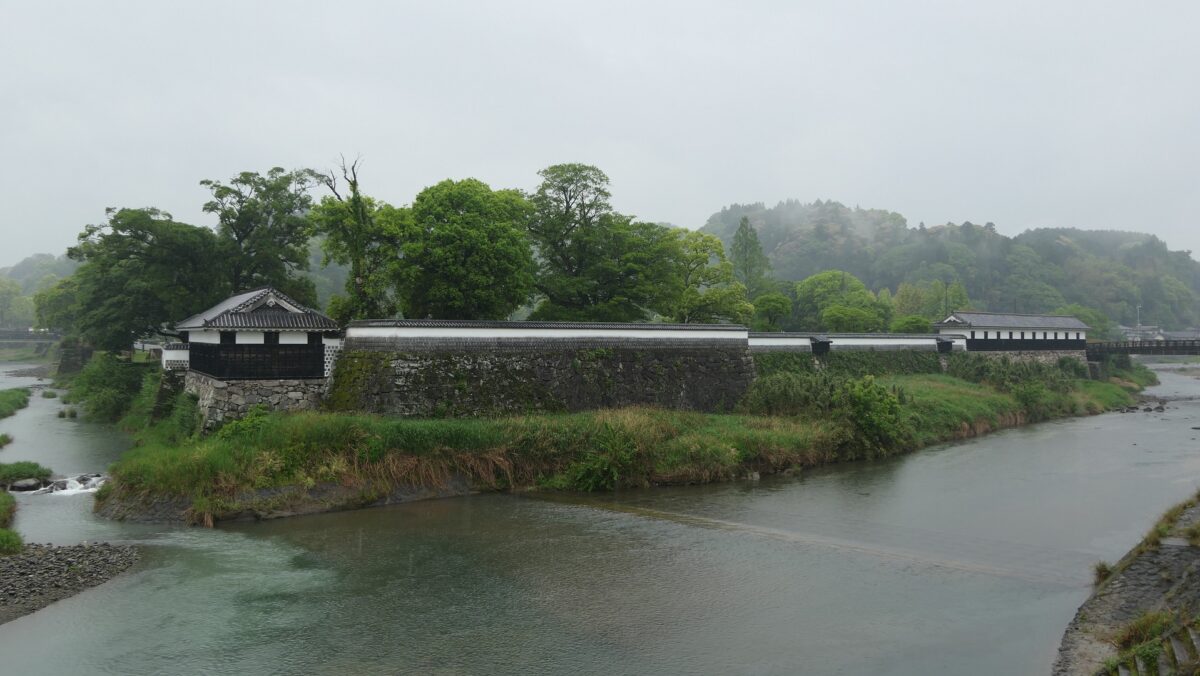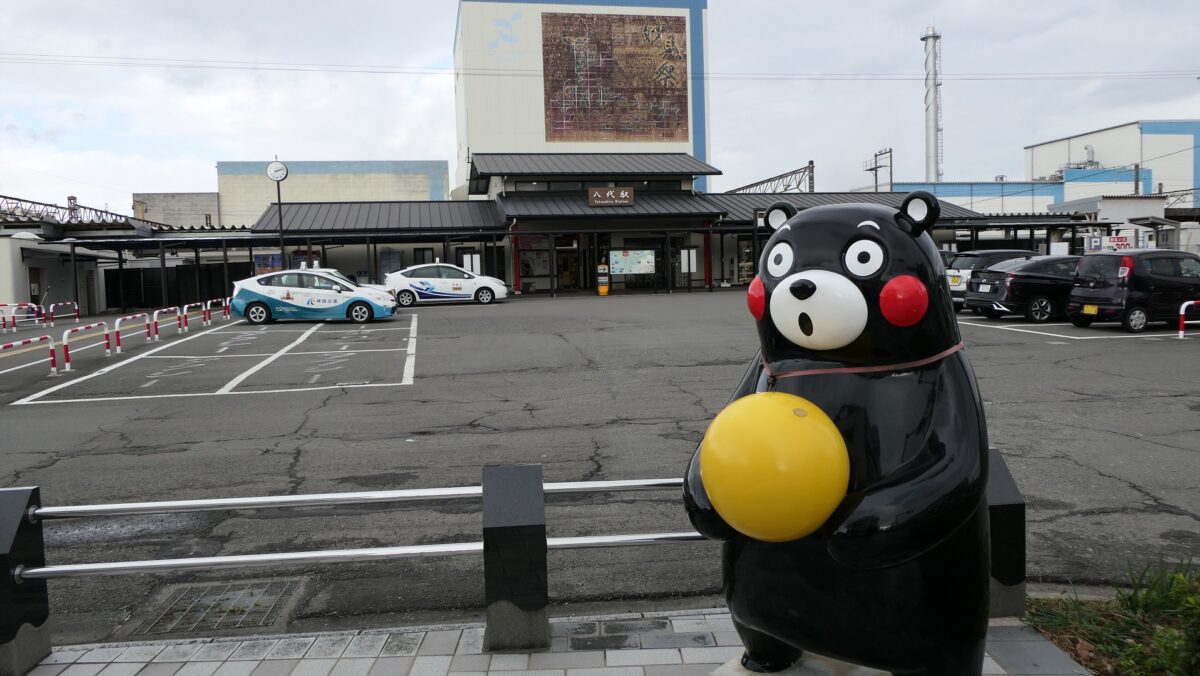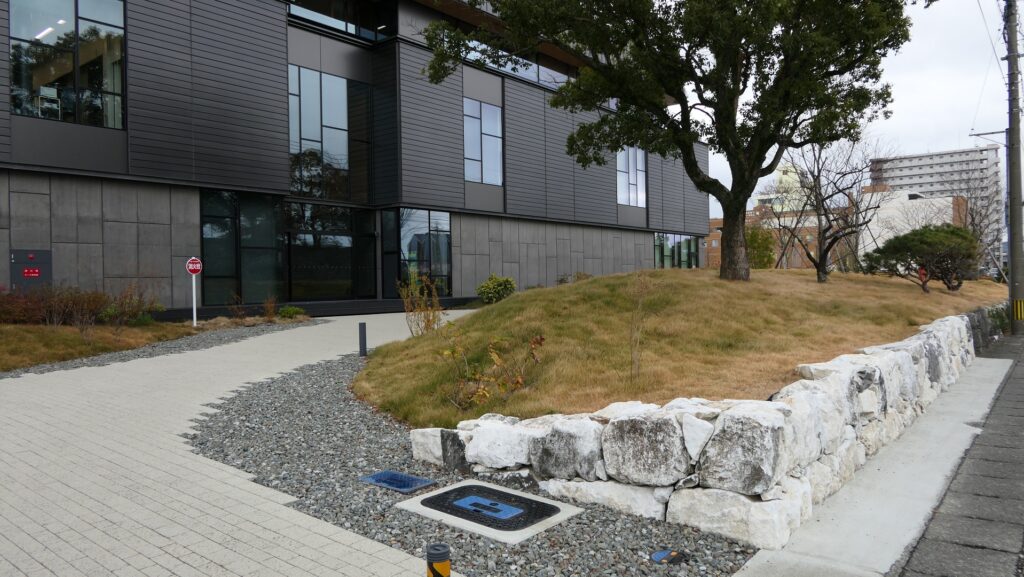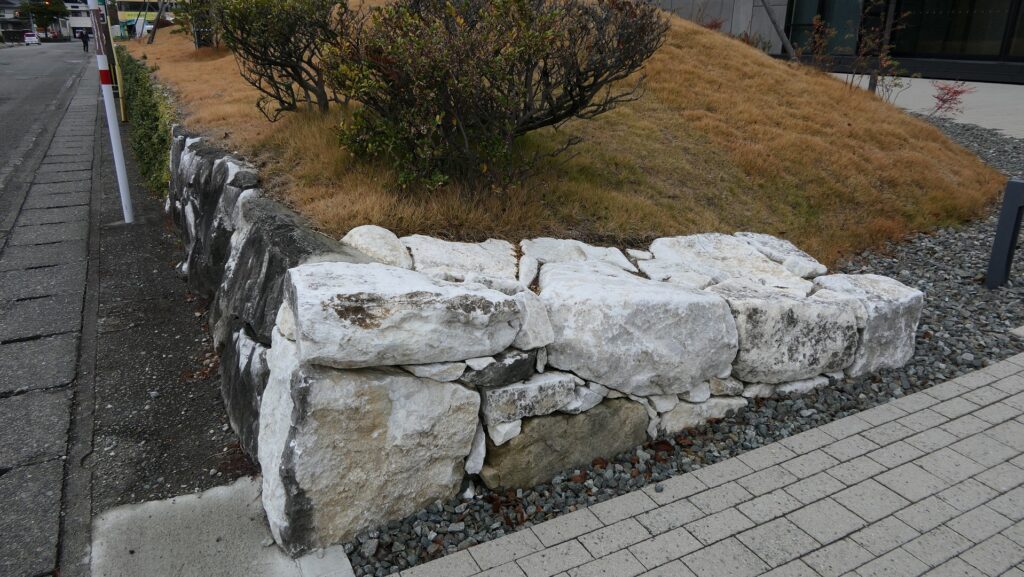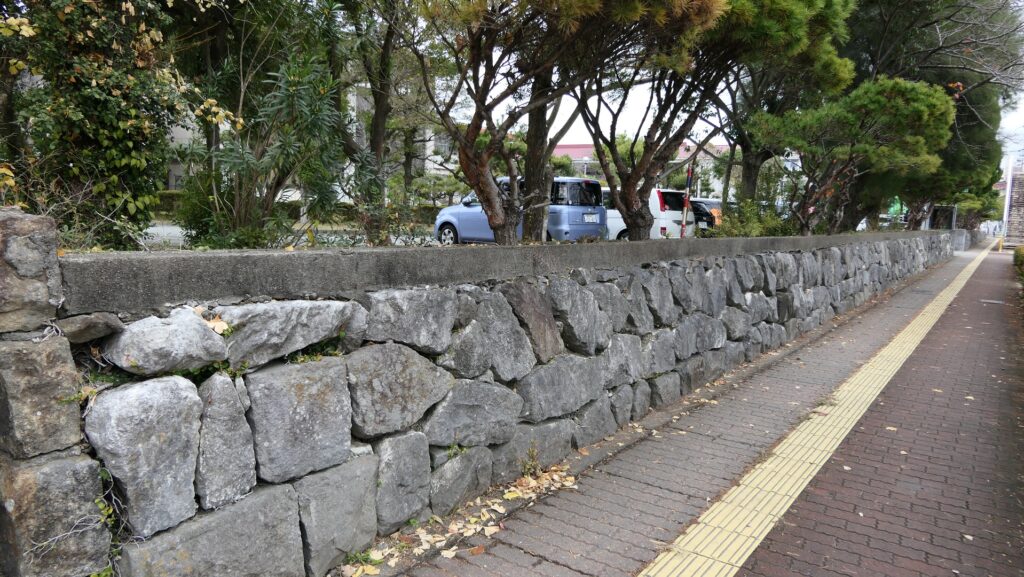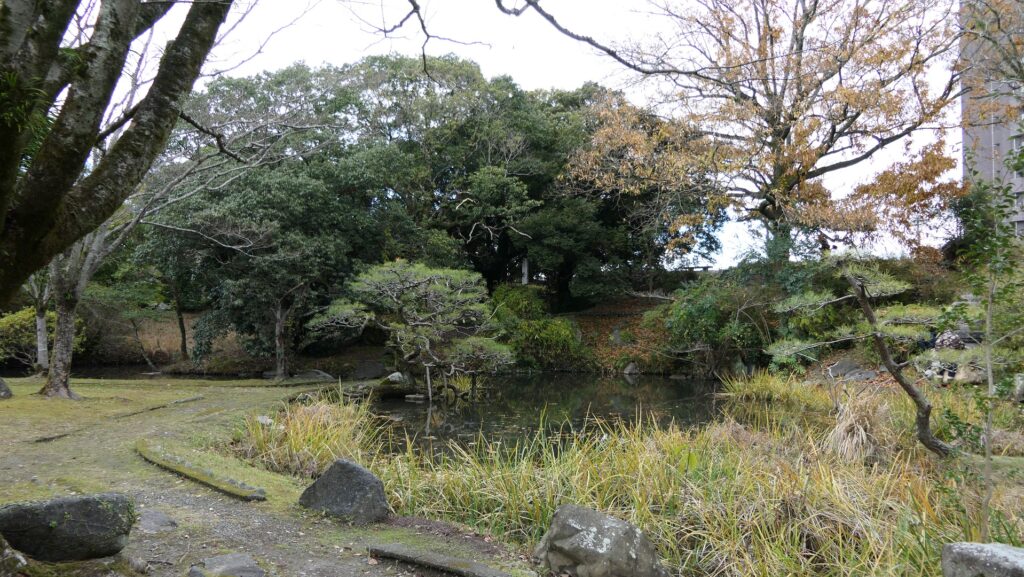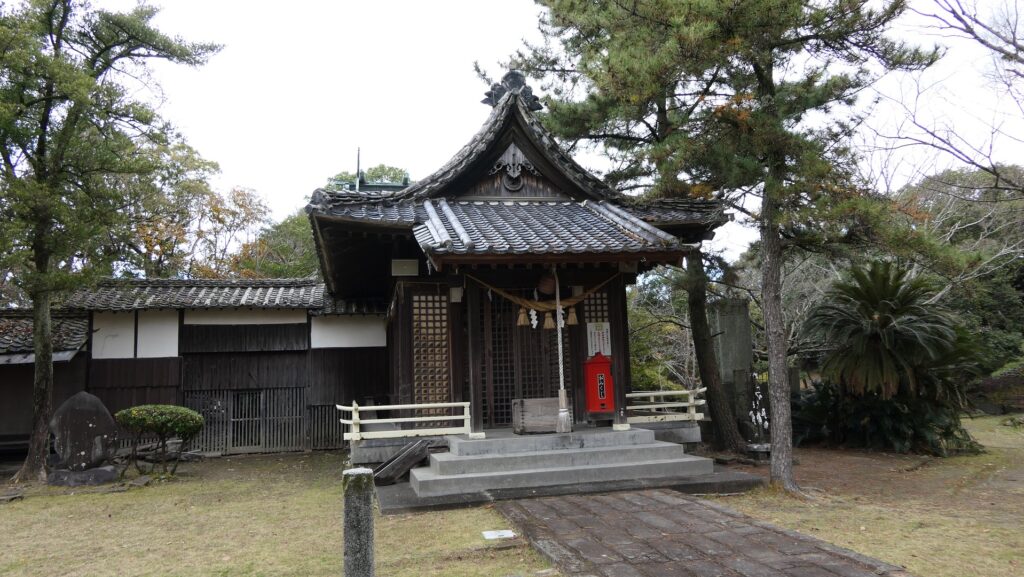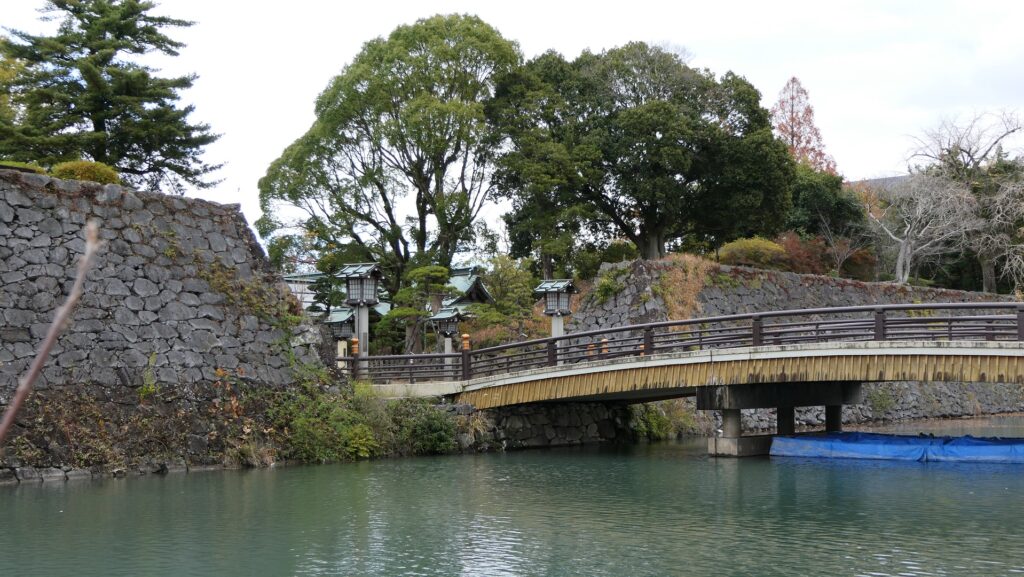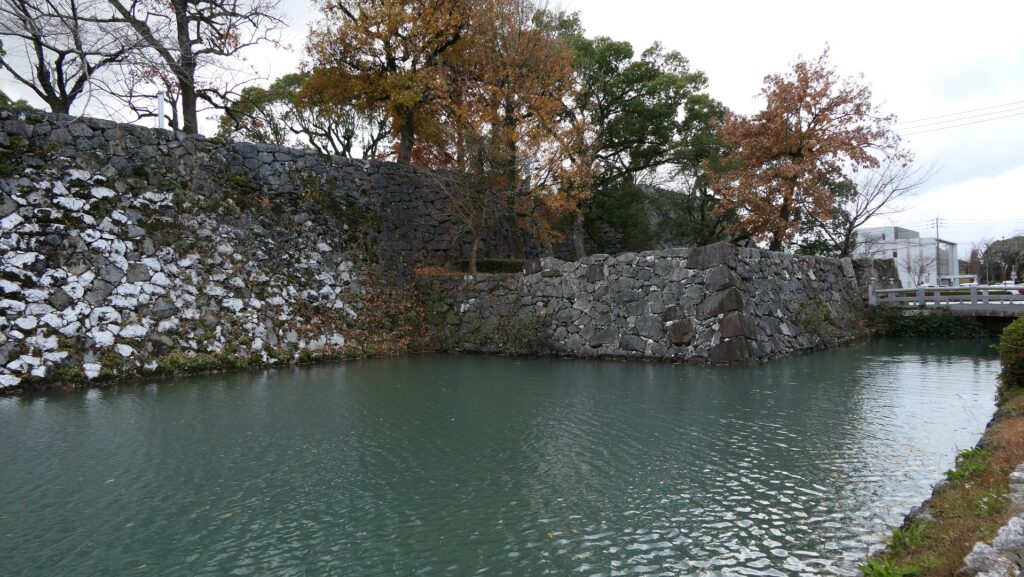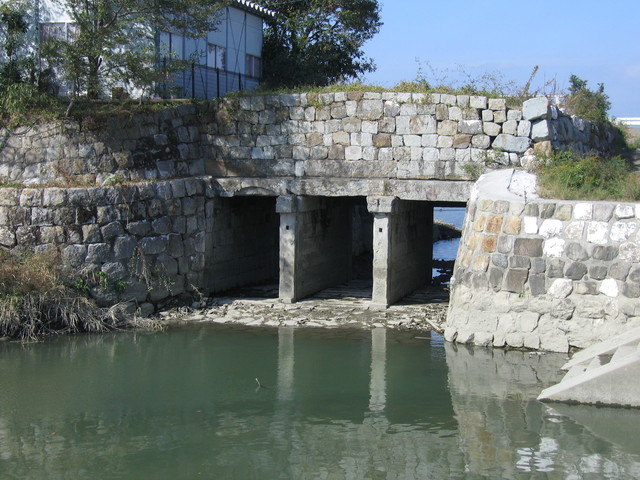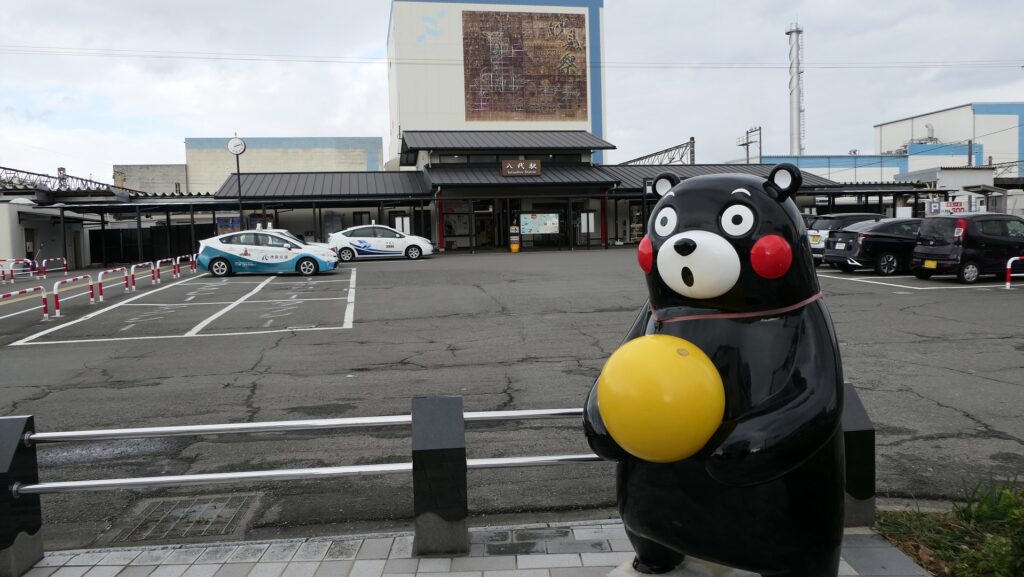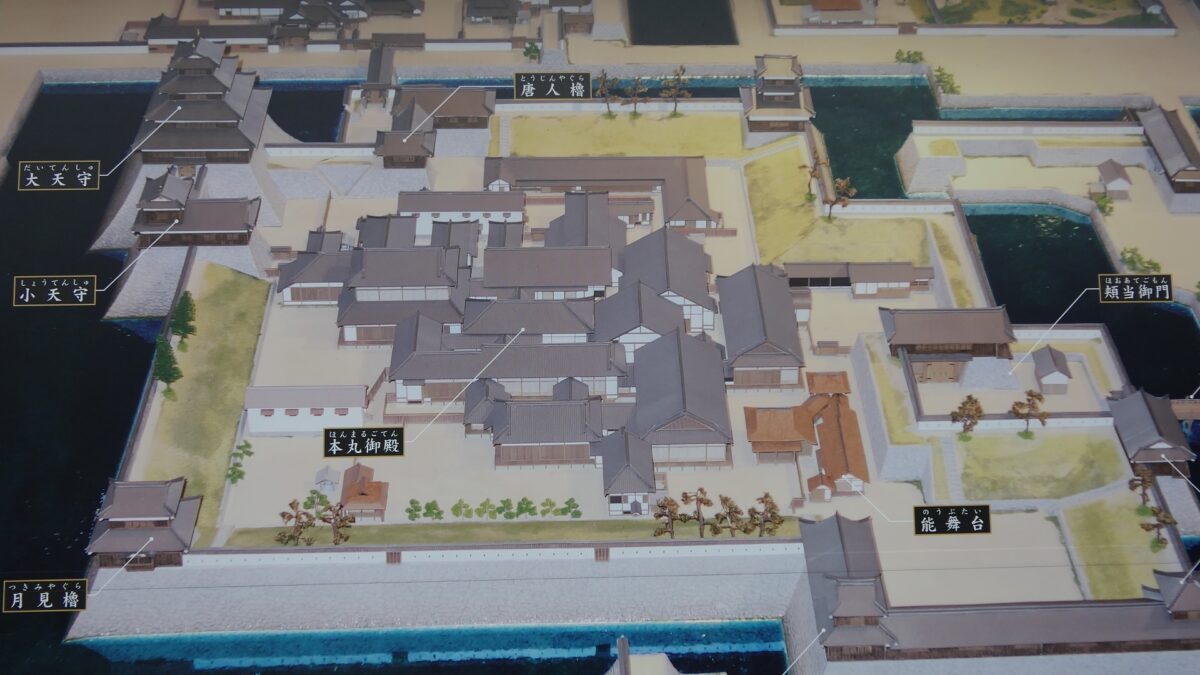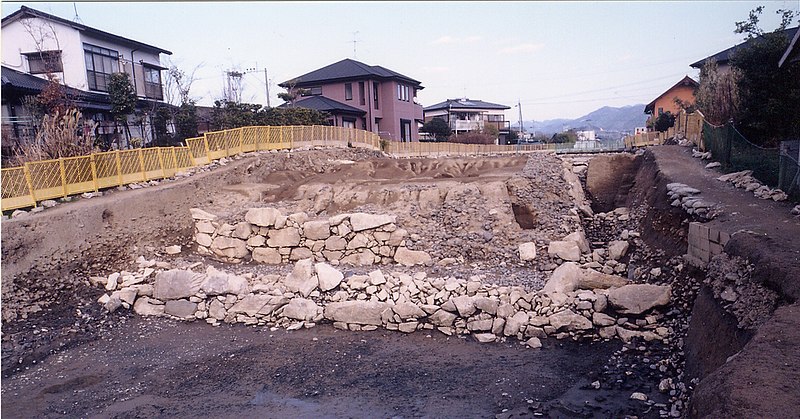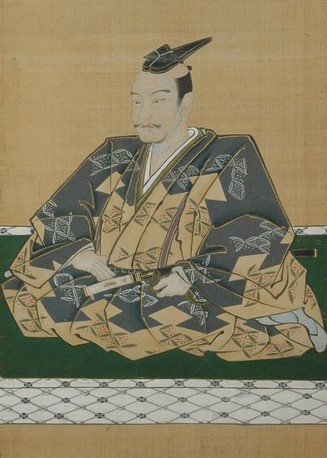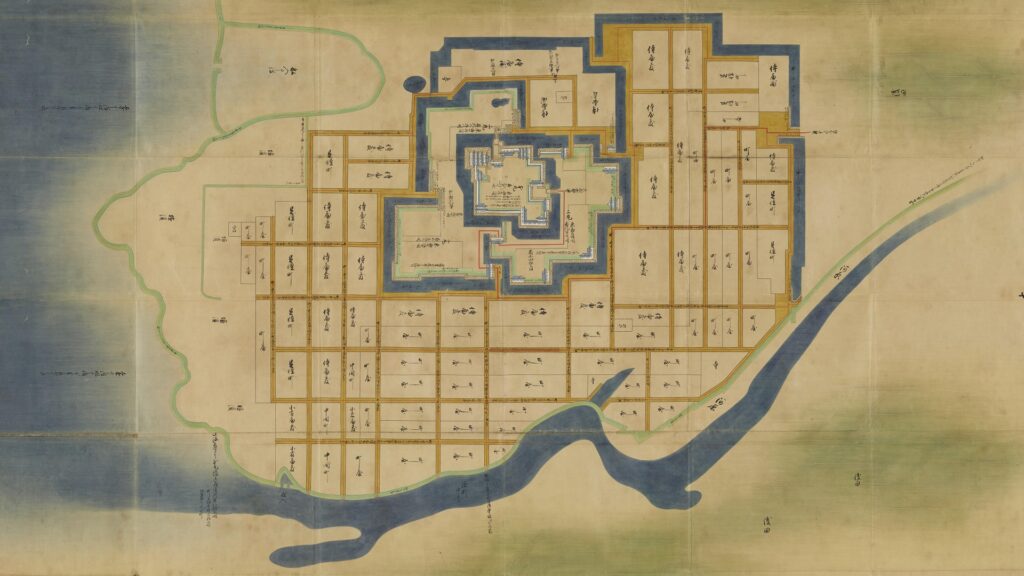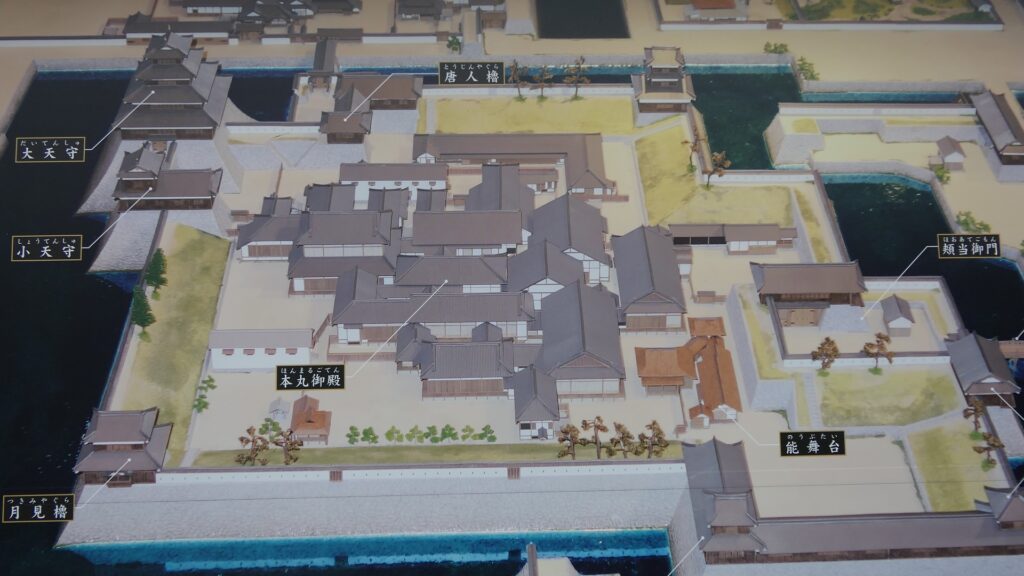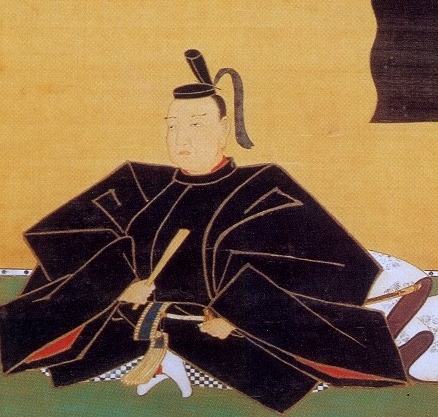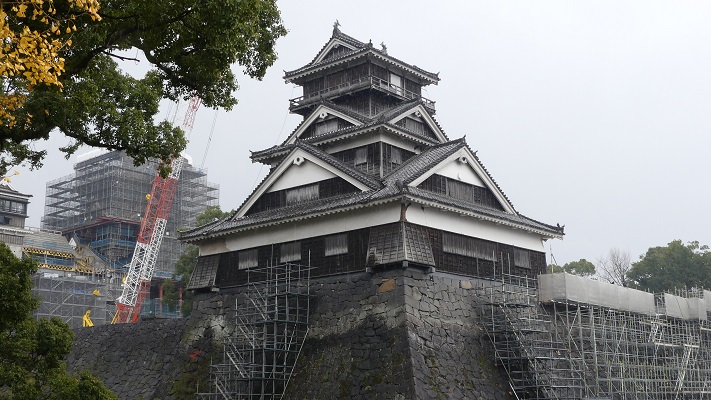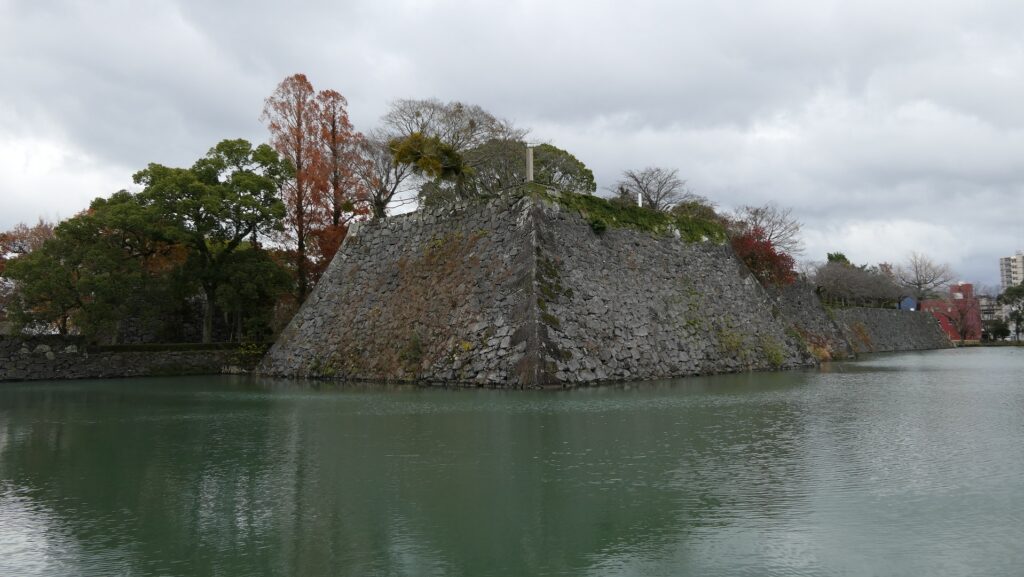Location and History
Sagara Clan governs Hitoyoshi area long
Hitoyoshi Castle was located beside the Kumagawa River in the Hitoyoshi Basin in the southern part of Higo Province which is modern day Kumamoto Prefecture. The Sagara Clan, the builder of the castle was first sent to the Hitoyoshi area by the Kamakura Shogunate around 1200. They lived in their residence on a flat square space, surrounded by moats, in the area like other lords in other areas at that time used to do such as the Ashikaga Clan Hall. Some consider this is the origin of Hitoyoshi Castle, however, the residence was built in a different place and ways from the castle which would be built later on. The clan had continued to govern the area since their settlement and the government was allowed by the shogunate and the governor of the province, the Kikuchi Clan. The square residence was moved and rebuilt at least once, but it became a holy place where important ceremonies like recruitements for the clan were held.
The range of Higo Province and the location of the castle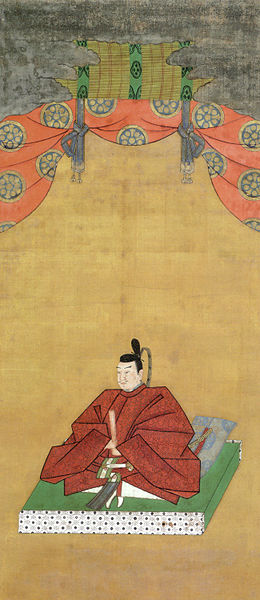

Nagatsugu Sagara builds Castle after his Overthrowing
However, it was not enough for them to maintain their territory and decide who would be their next successor. They were finally done by power and battles. In the middle of the 15th Century, Nagashige Nagatomi, a relative of the Sagara Clan, overthrew his superiors when the Bunan Internal Troubles happened and eventually became the lord of the clan, and he renamed it Nagatsugu Sagara. He first lived in Yamada Castle, a small mountain castle, located in the north of the previous lord’s residence. Then, he built and moved to Taka Castle which had several enclosures on the Shirasu plateau, near the residence, as he got more powerful. He probably made his retainers live in these enclosures to prepare for his taking over. It wss thought that he finally built Hitoyoshi Castle at the current place when he succeeded.
The transition of the home bases of Nagashige NagatoneHitoyoshi Castle was built along the southern side of the Kumagawa River in a similar way to that of Taka Castle on the Shirasu plateau, but was much larger than it. In fact, the early stage of Hitoyoshi Castle was also much larger than its later stage during the Edo Period which is what we call the castle ruins. The early one was actually a group of local castles, such as Uehara-jo, Nakahara-jo, Shimohara-jo, Nishino-maru, Sotomawari, and Uchi-jo. Each local castle was on one hill of the plateau which was separated from the others by dry moats. The lord of the clan lived in Uehara-jo which was the highest and largest castle among the group. An interesting thing about Uehara-jo was that it included the square space surrounded by its own moats which had been considered as the holy space for the clan. The important ceremonies seemed to continue to be held in the same space, which meant even the powerful new lord still wanted to follow the clan’s tradition and authority.

Sagara Clan’s Success and Failure
The increasing force of the Sagara Clan flew out from the Hitoyoshi area to other areas in Higo Province. In particular, they wanted to get the Yatsushiro area beside the Yatsushiro Sea, which prospered from trading internationally. Nagatsugu’s son, Tametsugu started to invade the Yatsushiro area. Yoshishige, four generations after Tametsugu completed it and moved his home base from Hitoyoshi Castle to Furufumoto Castle which was called Yatsushiro Castle in 1534. The clan became one of the greatest warlords in the Kyushu Region and traded with foreign countries through the Ryukyu Kingdom, directly with the Ming Dynasty of China and even by smuggling. As a result, Hitoyoshi Castle was renovated as a branch castle of the clan. The Uchijo portion, which was used for the lord’s family residence, became the new lord’s residence which was called Miuchi.

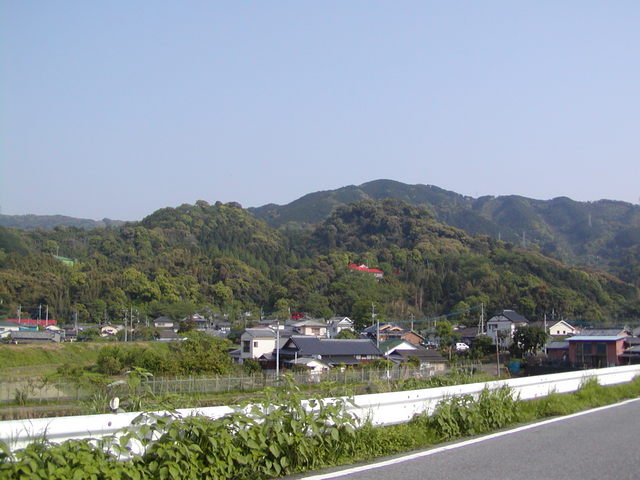
However, the Shimazu Clan, which aimed to invade all of the Kyushu Region in the late 16th Century, forced the Sagara Clan to surrender and hand Yatsushiro Castle over to the Shimazu Clan. The Sagara Clan had to return to Hitoyoshi Castle but was able to maintain it and their territory while the unification of Japan by Hideyoshi Toyotomi and the Tokugawa Shogunate was happening. Hitoyoshi Castle was reduced to the Miuchi area and the other parts were abandoned. Instead, the remaining area was modernized such as by building stone walls.
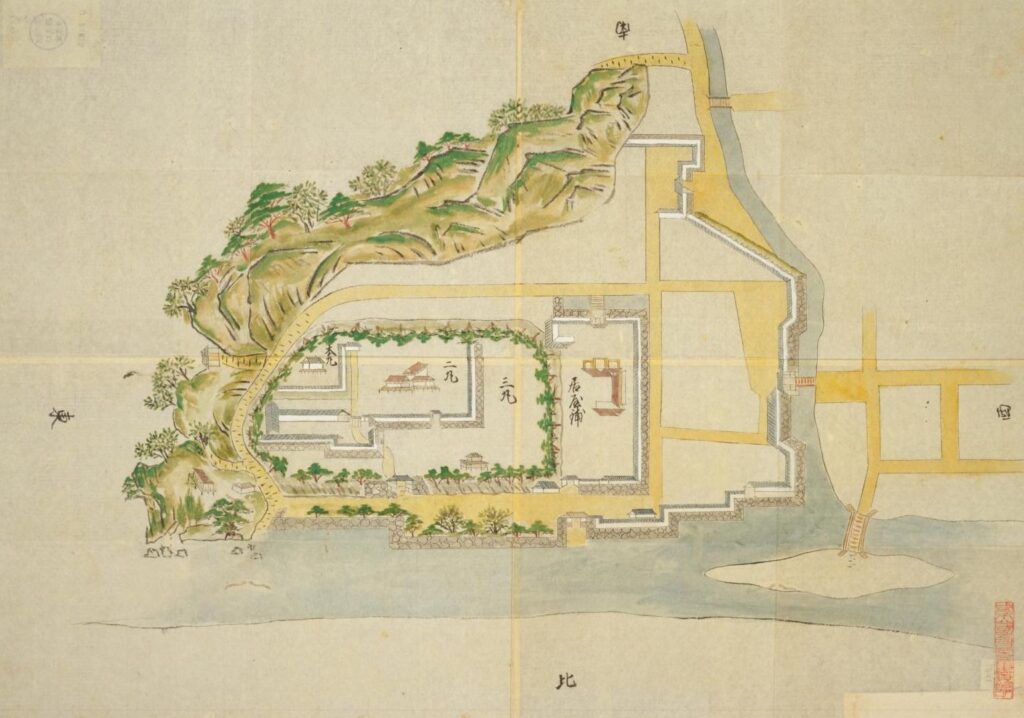
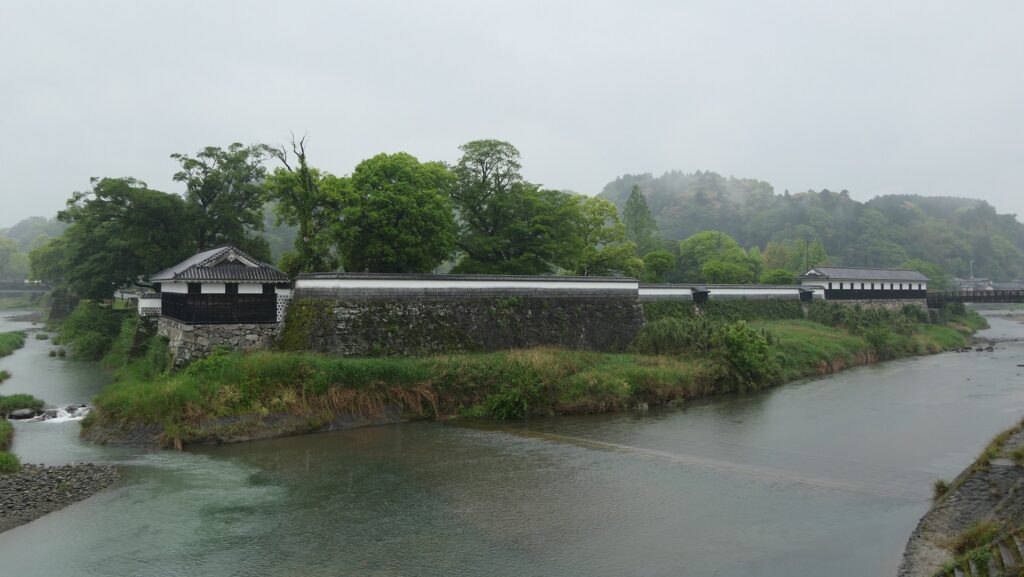
The Sagara Clan governed the castle and the area around all through the Edo Period as the Hitoyoshi Domain. There were some problems in the domain during the long period. For example, an internal comflict, called Oshita Rebellion, happened in 1640. A senior vassal, Seibe Sagara, who got the power to be equal to the lord among the domain, was banished by the lord. His relatives were besieged in their residences, called Oshita-yashiki, but were defeated and the residences were also burned down. There was a great fire called Torasuke Fire in 1862, which caused many of the castle to burn down. After that, some of the stone walls were restored using a new method called Hanedashi which emulated the European castles.


